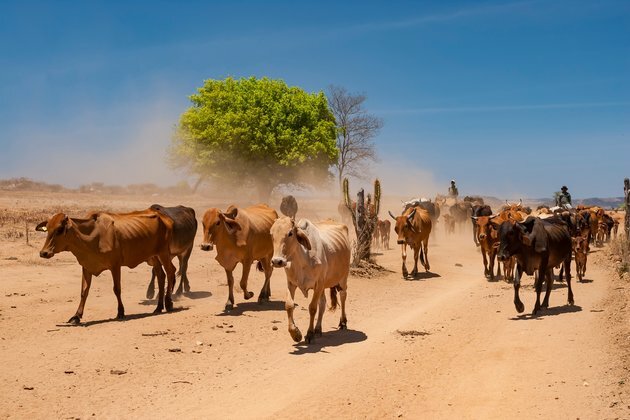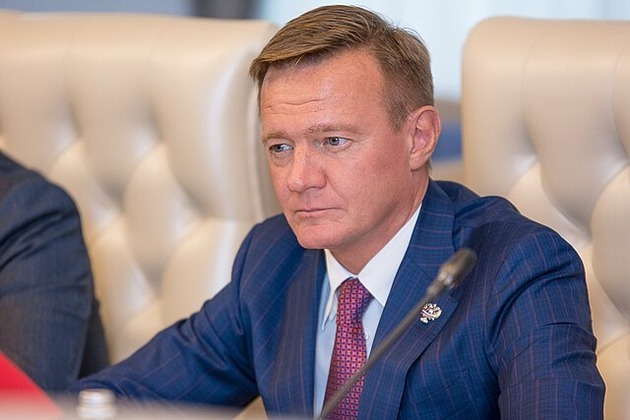Four possible consequences of El Nino returning in 2023
The Conversation
27 Jan 2023, 00:10 GMT+10

Every two to seven years, the equatorial Pacific Ocean gets up to 3C warmer (what we know as an El Nino event) or colder (La Nina) than usual, triggering a cascade of effects felt around the world. This cycle is called the El Nino Southern Oscillation (ENSO) because every El Nino is naturally followed by a La Nina and vice versa, with some months of neutral conditions in between events. The change in sea surface temperature associated with ENSO events might seem marginal, but it is more than enough to disrupt weather patterns globally and even the large-scale circulation of air in the polar stratosphere 8km above the Earth.
It is not surprising for La Nina conditions to last two consecutive years, but a three-year La Nina, which the world has had since 2020, is more rare. The US National Oceanic and Atmospheric Administration (NOAA) has reported that the equatorial Pacific Ocean will return to its neutral state between March and May of 2023, and it is likely that El Nino conditions will develop during the northern hemisphere's autumn and winter.
Given the strong influence of ENSO on global patterns of precipitation and temperature, scientists keep a close watch on the status of the tropical Pacific to provide the best possible information. So what can the world expect from the next El Nino event?
1. Likelihood of exceeding 1.5C
During an El Nino, the ocean transfers some of that excess heat and moisture to the atmosphere, as when you cook pasta and your kitchen gets steamy. On top of the global warming trend, a strong El Nino can add up to 0.2C to the average temperature of the Earth. The hottest year on record was 2016, during a particularly strong El Nino. A La Nina year can also break heat records, as the warming trend imposed by the increasing accumulation of greenhouse gases in the atmosphere can mask the cooling effect of natural processes.
Since the planet has already warmed by around 1.2C relative to pre-industrial times and El Nino adds some extra heat to the atmosphere, it's possible that Earth's rising temperature will temporarily exceed the 1.5C threshold of the Paris agreement some time after the peak of the El Nino in 2024, though it is too early to know how strong this next event will be.
2. More heat, drought and fires in Australia
Australia has had three years of above average rainfall due to prolonged La Nina conditions that brought severe floods, especially in the east. During El Nino, scientists expect the opposite: less rain, higher temperatures and increased fire risk, especially during winter and spring in the southern hemisphere.
As the globe heats up, some regions are warming faster than others. A good example is Australia, which is 1.4C hotter now than in the early 20th century. Every year, the area of the continent scorched by wildfires increases, fuelled by a dry trend induced by climate change. This occurs despite the anomalous wet years that Australia has experienced during the recent La Nina event. The underlying influence of climate change makes the country extremely vulnerable to the effects of an El Nino.
3. Slower carbon uptake in South America
South America is where the effects of ENSO were first documented by Peruvian fishermen centuries ago. Given the proximity to the equatorial Pacific Ocean, South American weather is significantly disrupted every time an El Nino event occurs, with flooding on the west coasts of Peru and Ecuador and drought in the Amazon and northeast, where the consequences of crop failures can reverberate across the continent.
During El Nino events, the fall in precipitation and rise in temperature in Colombia has been linked to outbreaks of diseases spread by insects, such as malaria and dengue fever. Higher temperatures during El Nino boost the rates at which mosquitoes breed and bite.
Elsewhere during an El Nino, the Amazon rainforest dries and vegetation growth slows so that less CO₂ is absorbed from the atmosphere, a trend repeated in the tropical forests of Africa, India and Australia.
4. Cold winters in northern Europe
The balance between high pressure over the Azores and low pressure over Iceland determines where rain goes in Europe during winter by pushing the jet stream - a band of strong eastward winds that carries rain across the Atlantic - north or south. During El Nino winters, both pressure centres lose strength, and the jet stream brings wetter conditions to southern Europe.
The largest effect is observed in northern Europe, however, where winters become drier and colder. A frosty 2023-24 winter season is likely if El Nino ramps up sufficiently by then. As a result of global warming, scientists expect El Nino's influence over the North Atlantic and northern European winter will strengthen.
Understanding the intricacies of the climate system is similar to trying to assemble a big jigsaw puzzle. The oceans talk to each other, and to the atmosphere, which at the same time feeds back to the ocean. Scientists are still unsure how El Nino will behave in the future, but its effects will probably be amplified by climate change in different regions of the world.
Don't have time to read about climate change as much as you'd like?
Get a weekly roundup in your inbox instead. Every Wednesday, The Conversation's environment editor writes Imagine, a short email that goes a little deeper into just one climate issue. Join the 10,000+ readers who've subscribed so far.
Author: Paloma Trascasa-Castro - PhD Candidate in Climate Science, Barcelona Supercomputing Centre, University of Leeds 
 Share
Share
 Tweet
Tweet
 Share
Share
 Flip
Flip
 Email
Email
Watch latest videos
Subscribe and Follow
Get a daily dose of Sydney Sun news through our daily email, its complimentary and keeps you fully up to date with world and business news as well.
News RELEASES
Publish news of your business, community or sports group, personnel appointments, major event and more by submitting a news release to Sydney Sun.
More InformationBusiness
SectionBP appoints ex-Shell finance chief Simon Henry to board
LONDON, U.K.: This week, BP appointed Simon Henry, former Shell finance chief, to its board as a non-executive director effective September...
FedEx, UPS step up as Canada Post loses market share in strikes
OTTAWA, Canada: With Canada Post struggling to maintain operations amid labour unrest, rivals like FedEx and UPS are stepping in to...
U.S. stocks steady Tuesday despite tariffs turmoil
NEW YORK, New York - U.S. and global markets showed a mixed performance in Tuesday's trading session, with some indices edging higher...
Beijing blamed for covert disinformation on French fighter jet Rafale
PARIS, France: French military and intelligence officials have accused China of orchestrating a covert campaign to damage the reputation...
Birkenstock steps up legal battle over fakes in India
NEW DELHI, India: Birkenstock is stepping up its efforts to protect its iconic sandals in India, as local legal representatives conducted...
Beijing hits back at EU with medical device import curbs
HONG KONG: China has fired back at the European Union in an escalating trade dispute by imposing new restrictions on medical device...
International
SectionPutin fires transport chief, later found dead in suspected suicide
MOSCOW, Russia: Just hours after his sudden dismissal by President Vladimir Putin, Russia's former transport minister, Roman Starovoit,...
Thousands gather in Himalayas as Dalai Lama celebrates 90th birthday
DHARAMSHALA, India: The Dalai Lama turned 90 on July 6, celebrated by thousands of followers in the Himalayan town of Dharamshala,...
Fans perform WWII-era Fascist salute at Marko Perković’s mega concert
ZAGREB, Croatia: A massive concert by popular Croatian singer Marko Perković, known by his stage name Thompson, has drawn widespread...
U.S. Treasury Secretary says Musk should steer clear of politics
WASHINGTON, D.C.: Elon Musk's entry into the political arena is drawing pushback from top U.S. officials and investors, as his decision...
TikTok building U.S.-only app amid pressure to finalise sale
CULVER CITY, California: TikTok is preparing to roll out a separate version of its app for U.S. users, as efforts to secure a sale...
Trump defends use of 'Shylock,' citing ignorance of slur
WASHINGTON, D.C.: President Donald Trump claimed he was unaware that the term shylock is regarded as antisemitic when he used it in...













